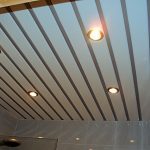Natural natural stone is a beautiful finishing material that is widely used in private construction. It can be used with success for facing facades, arranging paths and lawns, and decorating walls indoors. But natural stone is expensive, and replacing it with success can be artificial. In appearance, they are almost no different. Moreover, such a stone is not necessary to buy - you can easily make it yourself at home.

Manufacturing plan
You can make a stone from gypsum and cement. The second option is suitable for outdoor use, while the first is suitable only for interior decoration. Manufacturing processes are similar, but plastering is a little easier.
The manufacturing technology of the stone is simple and consists of several steps:
- For a stone you need to find a good shape (matrix). It is made independently of silicone. This process is also not complicated, its detailed description can be found on the Internet. For the manufacture you need artificial or natural stone, on which the sample is made. But if there is no desire to mold, you can buy ready-made in specialized stores.
- A solution is prepared from gypsum or cement and sand, into which citric acid and plasticizers are added (for cement). To give the stone the desired color, dry powder paints or a finished color are added to the mixture.
- The solution is thoroughly mixed, it is better to use a mixer or a nozzle on a drill. The form is treated with a pre-prepared soap solution (calculation 1:10, but not less). Make it easy with a household spray.
- The prepared mixture is well poured into the mold and rammed. You can turn on the vibrator or just knock with a hammer on the back of the table. It is not necessary to vibrate the cement strongly, since sand will settle to the bottom from the liquid solution, and this will reduce the strength of the finished product. The shape must be given a horizontal position. On top of the mixture must be leveled with a spatula.
- Next, the filled molds are removed to ripen and harden the mixture.
- Once the solution has set, the stones can be carefully removed from the mold and laid out on shelves for further drying. You can dry the stones in the summer on the street, but it is better not to keep the cement in direct sunlight. Gypsum hardens faster. For complete hardening of the cement, more time is needed until all chemical reactions have passed.

A stone made in this way can be painted on top, varnished or primed. It is laid on a pre-prepared wall using glue for stone. Gypsum stone can be planted on liquid nails.
-
 How to dismantle old floors very quickly
How to dismantle old floors very quickly
-
 How to prepare walls so that the paint does not peel off
How to prepare walls so that the paint does not peel off
-
 How to quietly glue two pieces of linoleum
How to quietly glue two pieces of linoleum
-
 How to make a smooth crate of timber
How to make a smooth crate of timber
-
 The easiest ways to install an interior door
The easiest ways to install an interior door
-
 How to make reliable wallpaper glue
How to make reliable wallpaper glue
-
 What weld techniques are best avoided
What weld techniques are best avoided
-
 How to assemble a reliable extension cord for winter so that the wire does not harden
How to assemble a reliable extension cord for winter so that the wire does not harden
-
 How to eliminate the gaps between the chimney and slate
How to eliminate the gaps between the chimney and slate
-
 Homemade washing powder
Homemade washing powder
-
 How to install the last rail of the rack ceiling
How to install the last rail of the rack ceiling
-
 How to beautifully restore windows?
How to beautifully restore windows?
New publications are published daily on our channel in Yandex. Zen
Go to Yandex. Zen


